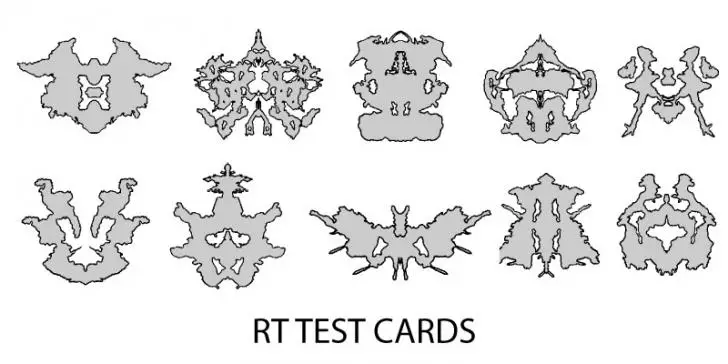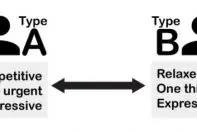Rorschach Inkblot Test is the is the most commonly used projective psychological test. The test was first introduced in 1921 by a Swiss psychiatrist called Hermann Rorschach. It is based on the use of inkblots, which is where it acquired the name RT.

What does the Rorschach Test measure?
The test wasn’t originally founded to be a projective test for personality. The original purpose of the test was to produce a profile of people suffering from mental disorders, like schizophrenia, based on the scoring. Even Rorschach himself was not completely satisfied with the idea of using the test as a projective test for personality.
At the simpler level, Rorschach is merely a problem solving task that portrays the psychological analysis of the subject. Also, it aids in figuring out the past and future behavior of the subject up to some degree. Although it takes quite a bit of imagination to procure a response, the basic process of the task is almost irrelevant with the imagination or creativity of the subject.
Features of Rorschach Test
The final analysis of the Rorschach test is not just based on the contents of the response, in fact, it’s merely a small basis for the evaluation.
- The time taken by the subject to respond to a certain card affects a great deal. For instance, if the subject takes longer time, then it could be analyzed as “shock” on the card.
- The comments made by the subject on the card other than the intended response is also analyzed.
- Determinants in the card, such as color, form, location, that lead to the trigger of response is also another important aspect, rather than the content itself.
- Originality and popularity of responses are also regarded as the basic dimensions in the analysis.
Scoring Systems
Before 1969, Rorschach Inkblot test was evaluated using five primary scoring systems based on how people responded to the inkblots on the cards. Most used were the Beck and the Klopfer systems. But, in 1969, John E. Exner, Jr, compared all five systems and published the new testing mechanism.
The analysis was ground breaking on the field and he found that they weren’t five different ways to measure the RT, instead, they were so completely different from each other that they were five different tests.
Dissatisfied by his findings, Exner created a new comprehensive scoring system for the Rorschach, by accommodating the best components of the five tests into one.
How is the test done?
Unlike Thematic Apperception test, this test consists of ten black and white cards with blots of ink on them. The cards could be multi-colored. The subjects who are to be examined are provided with these cards one by one, and asked what they look like, or what they could be. The test is completely dependent on the guesswork done by the subjects. The subjects are allowed to answer with one, several responses, or no response to each card. Additionally, the subjects are allowed to hold the card in any position they want, whether it’s upside down or sideways.

Responses, thus recorded, are scored according to the form level, determinants, location, and content. The location is the section of the blot chosen – the whole card, or a major or minor detail. There are various determinants that determine the characteristics of a person. These include features of the blot like shading, texture, or color that influence the response. The content is what of the response, for instance, a bat, a human torso, butterfly, etc. Form level indicates whether the response is consistent with the shape of the blot and the complexity of the response.
If a response reflects the shape of the blot, it is considered as a sign of adequate reality testing. Likewise, a response that richly integrates several features of the blot is considered to be a sign of high intellectual functioning. Rorschach is thought to be a useful test that provides insight into a person’s intelligence, interests, and cultural background, degree of introversion or extraversion, level of anxiety, reality testing, and a host of other variables.
Critical Evaluation
The Rorschach testing is quite problematic in a way. Inkblots used in the testing must be considered truly ambiguous in order to have a non biased testing. A patient might interpret the ink blots in a way that defined him in a certain manner, but who’s to say that the therapist conducting the test is correct? Certainly another therapist can’t be used to assess the answers of the therapist. The process would never end.
Experts invented standardized interpretations of each sort of answers, to save the need of interpretation of an interpretation individually. Both content and form are standardized. For example, a patient who sees half-human or half-animal figures show that he is on the brink of schizophrenic withdrawal from people, according to Dawes – 148.
Because it’s a projective test, it’s not scientific. Someone calling it scientific would also have to be ready to defend interpreting dreams as a scientific method. So, it’s an unprovable assumption that a simple inkblot test will lead the therapist to the center of the patient.



